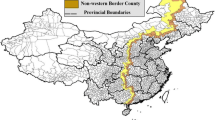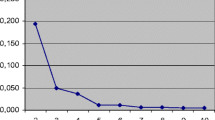Abstract
This paper examines whether concessionary tax rates and tax incentives can attract foreign direct investment (FDI) into certain designated areas in China. Since China opened its doors to foreign investors in 1979, tax benefits have been used extensively to attract FDI into different areas. In 1991, a new tax law was introduced which superseded two previous income tax laws. This new law provides additional tax benefits which improve the investment environment for foreign investors. This study investigates the effect of China's tax rates and tax incentive policy on FDI and on the locational choices of foreign firms. Our empirical results indicate that tax rates and incentives are important determinants of regional investment decisions in China, after controlling for potential confounding variables covering infrastructure, unemployment rate, wage rate and agglomeration economics. Specifically, areas offering lower tax rates and increased tax incentives are found to attract greater amounts of FDI. The impetus of the tax effect on FDI is more apparent in the post-1991 period due to changes in the tax laws. Our results also suggest that infrastructure variables are important determinants of regional investment decisions.
Similar content being viewed by others
References
Belsley, D. A., E. Kuh and R. E. Welsch, Regression Diagnostics, New York: John Wiley and Sons, 1980.
Boskin, M. J. and W. G. Gale, “New Results on the Effects of Tax Policy on the International Location of Investment.” Working Paper, No. 1862, National Bureau of Economic Research, (1986).
Carlton, D. W., “Why Do New Firms Locate where They Do: An Econometric Model,” in W. Wheaton (Ed), Interregional Movements and Regional Growth, pp. 13–50. Urban Institute, 1979.
Carlton “The Location and Employment Choices of New Firms: An Econometric Model with Discrete and Continuous Endogenous Variables.” The Review of Economics and Statistics 65, 440–449, (1983).
Cho, S., L. Chow and X. L. Tang, “The 1991 Income Tax Law for Foreign Investment in China-Changes and Implications for Foreign Investors,” in S. Cho (Ed), Taxation Reforms in China, pp. 14–20, The Hong Kong Polytechnic University, 1998.
Cho, S. and S. Tung, “Investment Incentive Zones and Regional Tax Incentive Policy in the People's Republic of China.” Journal of International Taxation 24(4), 37–41, (1998).
Coughlin, C. C., J. V. Terza and V. Arromdee, “State Characteristics and the Location of Foreign Direct Investment within the United States.” Review of Economics and Statistics 68, 675–683, (1991).
Crow, R. T., “Output Determination and Investment Specification in Microeconomics Models of Open Regions.” Regional Science and Urban Economics 9, 141–158, (1979).
Ding, D. J., “Foreign Investment into China.” Seminar Paper, The Hong Kong Polytechnic University China Business Centre, 1994.
Dunteman, G. H., Principal Components Analysis, Newbury Park, CA: Sage, 1989.
Economic Daily, and Economic Information & Agency. “China Utilized US$51.9 Billion of Foreign Investments in 1997.” China Economic News, February, 1–2, (1998).
Economist Intelligence Unit (EIU). “Special Zones and Cities.” In: China Hand, pp. 13. London: EIU, February, 1996.
Ernst&Young International, Report of a Survey of the Strategic Investment of Global 1000 Companies: Investment in Emerging Markets, Opportunity versus Risk. Ernst & Young International Ltd., 1994.
Fortune, Facility Location Decisions (A Fortune Market Research Survey), New York: Fortune, 1977.
Grubert, H. and J. Mutti, “Taxes, Tariffs and Transfer Pricing in Multinational Corporate Decision Making.” The Review of Economics and Statistics 73(2), 285–293, (1991).
Hadari, Y., “The Role of Tax Incentives in Attracting Foreign Investments in Selected Developing Countries and the Desirable Policy.” The International Lawyer 24(1), 121–152, (1990).
Hartman, D., “Tax Policy and Foreign Direct Investment in the United States.” National Tax Journal 37(4), 475–488, (1984).
He, X. and S. E. Guisinger, “Taxation of U.S. Foreign Direct Investment Abroad: Effective Tax Rates and Tax Policy Competition in Developed and Developing Countries.” Journal of International Accounting, Auditing & Taxation 2(2), 215–229, (1993).
Hines, J. R., Jr., “Altered States: Taxes and the Location of Foreign Direct Investment in America.” American Economic Review 86, 1076–1094, (1996).
Hirano, M., “Recent Trends in Investment and Operations of Foreign Affiliates.” JETRO China Newsletter, No. 104, 2–8, (1993).
Horst, T., “American Taxation on Multinational Firms.” The American Economic Review 67(3), 376–389, (1977).
Hotelling, H., “Analysis of a Complex of Statistical Variables into Principal Components.” Journal of Educational Psychology, 417–441, 498–520, (1933).
International Monetary Fund (IMF), World Economic Outlook, May, Washington, D.C.: IMF, 1994.
Kaiser, H. F., “The Application of Electronic Computers to Factor Analysis.” Educational and Psychological Measurement 20, 141–151, (1960).
Kopits G. F., “Taxation and Multinational Firm Behavior: A Critical Survey.” International Monetary Fund Staff Papers, November, Washington, DC: International Monetary Fund, 1976.
Moore, M. L., B. M. Steece and C.W. Swenson, “An Analysis of the Impact of State Income Tax Rates and Bases on Foreign Investment.” The Accounting Review LXII (4), 671–685, (1987).
Moomaw, R. L., “Is Population Scale a Worthless Surrogate for Business Agglomeration Economics?” Regional Science and Urban Economics 13, 525–545, (1983).
Newlon, T. C., “Tax Policy and the Multinational Firm's Financial Policy and Investment Decisions.” Ph.D. Dissertation, Princeton University, 1987.
Ondrich, J. and M. Wasylenko, Foreign Direct Investment in the United States: Issues, Magnitudes, and Location Choice of New Manufacturing Plants, Kalamazoo, MI: W. E. Upjohn Institute, 1993.
Pearson, K., “On Lines and Planes of Closest Fit to Systems of Points in Space.” Philosophical Magazine 6, 559–572, (1901).
Papke, L. E., “Subnational Taxation and Capital Mobility: Estimates of Tax-Price Elasticities.” National Tax Journal 40(2), 191–203, (1987).
Root F. R. and A. A. Ahmed, “The Influence of Policy Instruments on Manufacturing Direct Foreign Investment in Developing Countries.” Journal of International Business Studies 9(3), 81–93, (1978).
SAS. SAS/STAT User's Guide, Version 6, 4th ed. Cary, NC: SAS Institute, 1990.
Scholes, M. S. and M. A. Wolfson, Taxes and Business Strategy: A Planning Approach, Englewood Cliffs, NJ: Prentice Hall, 1992.
Slemrod, J., “Tax Effects on Foreign Direct Investment in the United States: Evidence from a Cross-Country Comparison,” in A. Razin and J. Slemrod (Eds), Taxation in the Global Economy, pp.79–122, National Bureau Economic Research, Chicago, 1990.
Snoy, B., Taxes on Direct Investment Income in the E.E.C.: A Legal and Economic Analysis, New York, 1975.
State Statistical Bureau, PRC. Urban Statistical Yearbook of China, 1989–95 (in Chinese). Beijing: State Statistical Publishing House, 1989–95.
Swenson, D. L., “The Impact of U.S. Tax Reform on Foreign Direct Investment in the United State.” Journal of Public Economics 54, 243–266, (1994).
United Nations. World Investment Report 1994: Transnational Corporations, Employment and the Workplace, New York: United Nations, 1994.
Usher, D., “The Economics of Tax Incentives to Encourage Investment in Less Developed Countries.” Journal of Development Economics 4, 119–149, (1977).
White, H., “AHeteroskedasticity-ConsistentCovariance Matrix Estimator and a DirectTest for Heteroskedasticity.” Econometrica 48(4), 817–838, (1980).
Yelpaala K., “The Efficacy of Tax Incentives within the Framework of the Neoclassical Theory of Foreign Direct Investment: A Legislative Policy Analysis.” Texas International Law Journal 19, 365–414, (1984).
Young, K. H., “The Effect of Taxes and Rates of Return on Foreign Direct Investment in the United States.” National Tax Journal 41(1), 109–121, (1988).
Author information
Authors and Affiliations
Rights and permissions
About this article
Cite this article
Tung, S., Cho, S. Determinants of Regional Investment Decisions in China: An Econometric Model of Tax Incentive Policy. Review of Quantitative Finance and Accounting 17, 167–185 (2001). https://doi.org/10.1023/A:1017925721627
Issue Date:
DOI: https://doi.org/10.1023/A:1017925721627




